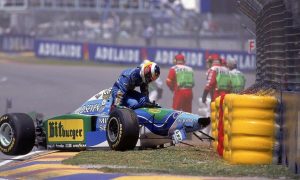GOING ONE STEP TOO COMPACT?
Honda’s turbine is equally compact and mounted at the back of the power unit (see on the image above). Actually, it also sits within the vee of the engine. This radical downsizing and the associated restraints were decided and agreed upon with McLaren ahead of the partners’ reunion.
But when spinning at the same rotational speed, a smaller turbine will de facto generate less power and more back pressure, which ends up penalising the internal combustion engine (ICE) in the higher RPMs. As a result, the MGU-H absorbs less power from the turbine shaft.
“Our biggest issue is that we can’t fully use our electric power,” McLaren-Honda racing manager Eric Boullier recently told F1i. “We can’t deploy it as often as our rivals. Compared to the other power units, our MGU-H is not capable of charging the battery and supplementing the MGU-K.
“According to the technical regulations, the maximum energy used by the battery to power the MGU-K is limited to 4MJ. The thing is, we use these 4MJ before finishing the lap, so can’t deploy any further energy thereafter. At Spa-Francorchamps for instance, Fernando [Alonso] and Jenson [Button] could use the ERS on only one of the two big straights, and even then, not all the time.”
This situation does share similarities with what Ferrari experienced last year on its own power unit. Eager to maximise aerodynamics and have a tight rear end on its F14 T, the Scuderia also ran a very compact turbocharger installation. But it ended up compromising outright turbine efficiency. Realising that aero gains did not make up for the lack of engine power, engineers at Maranello successfully made amends for 2015.
“Ferrari had pretty much the same issue as us last year,” confirmed Boullier. “Their leap in performance comes from their MGU-H now working to its fullest potential.”








